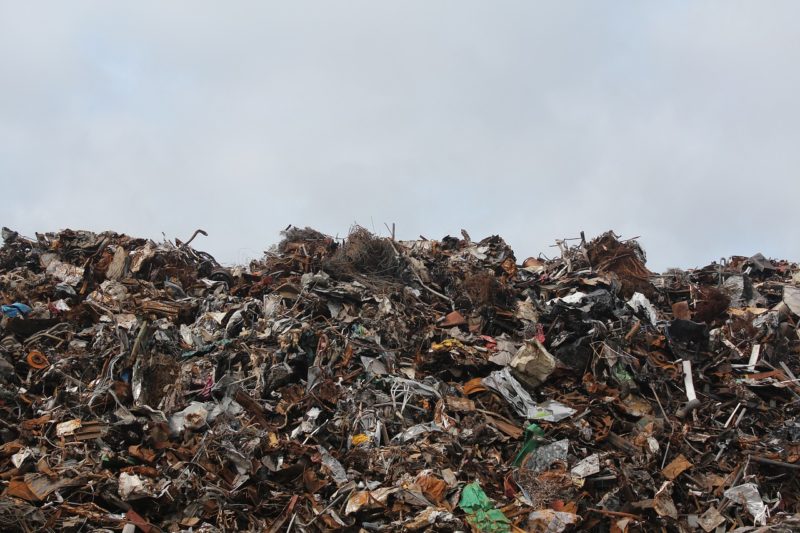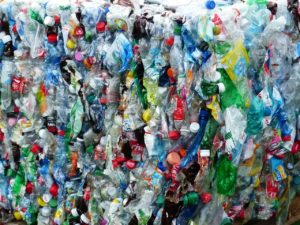Jim Roberts, Product Manager at Beaverswood, discusses why easy-to-use waste collection, segregation and management systems should be adopted as space increasingly becomes a premium for warehouse and logistics operations.
 Considerable amounts of paper, cardboard, plastic and other waste materials are generated annually by the UK’s warehouse and supply chain sector. According to official reports, in 2017, the UK commercial and industrial sectors generated 37.9 million tonnes of waste.
Considerable amounts of paper, cardboard, plastic and other waste materials are generated annually by the UK’s warehouse and supply chain sector. According to official reports, in 2017, the UK commercial and industrial sectors generated 37.9 million tonnes of waste.
If left unattended, waste material can quickly become a health and safety risk while impacting on operational performance. Improving waste management can save businesses time and money, ultimately delivering efficiencies and boosting the bottom line.
Effective solutions
Because of the sheer size and scale of most modern distribution centres and warehouses, it can sometimes be tricky to deign and install a comprehensive packaging waste recycling system. However, there are effective solutions readily available and easy-to-use.
So, what’s involved in keeping the workplace tidier, and what should be considered when it comes to choosing the right products?
It starts with thinking holistically about the role of waste collection, segregation and management, and how it fits into operations.
Consider the available space and those areas where waste can be reduced and reused. Any system you choose should also be easily identifiable, intrinsically safe, and simple to use for pickers and other people working in and around storage racks and shelving.
For instance, floor operatives need to be able to dispose of cardboard, paper, plastic, wrapping, clips and other waste quickly and safely while simultaneously separating waste by material rather than simply disposing of everything in the same bin.
Contemporary systems are engineered to save time and floor space, enabling operators to quickly secure improvements in the segregation of waste materials, maintaining safe, tidy and productive workspaces.
Best practice
A key part of best practice around the specification of any type of waste collection, segregation and management system can be garnered from several pieces of waste legislation.
This includes Packaging Waste Regulations which are designed to limit the amount of packaging going to landfill.
Consider some fundamental questions, as part of an initial pathway to achieving net-zero waste:
- What parts of your operation create the most waste?
- How does waste damage/impact your operations?
- Can any waste be recycled better to produce sustainable energy?
- What type of waste collection systems will best suit your needs?(It might not be necessary to have the same type across the entire warehouse to maximum efficiencies)
- Identify the volume of waste in process and packaging areas
- The number of employees, the type of work undertaken, and the volume of waste will help you to work out how many waste collection units are required.
- How far do pickers and other frontline staff have to walk to dispose of their waste?
- Whatsignage and markings are needed to support your recycling initiatives? The key to success is simple, clear and unequivocal signage that will contribute to smoother and more effective operations.
Recycling appeal
 Making systems easy-to-use is an important constituent of a successful recycling system. They should be straight forward to implement and access because overcomplicating things may lead to non-compliance and the reiteration of bad habits. Neither does effective recycling have to cost the earth in terms of time and money. Furthermore, if co-workers see the immediate benefits to be gained from using a recycling system, they are more likely to use it, while having accessible recycling points to hand saves time and effort when it comes to waste disposal. Also, support your recycling system choices with initiatives that secure people’s buy-in to sustainability and the wider greener agenda – explain to them why recycling is beneficial and why your company believes it’s important to tackle the issues directly.
Making systems easy-to-use is an important constituent of a successful recycling system. They should be straight forward to implement and access because overcomplicating things may lead to non-compliance and the reiteration of bad habits. Neither does effective recycling have to cost the earth in terms of time and money. Furthermore, if co-workers see the immediate benefits to be gained from using a recycling system, they are more likely to use it, while having accessible recycling points to hand saves time and effort when it comes to waste disposal. Also, support your recycling system choices with initiatives that secure people’s buy-in to sustainability and the wider greener agenda – explain to them why recycling is beneficial and why your company believes it’s important to tackle the issues directly.
Thought should be given to choosing the right product supplier. It’s crucial that they must offer products appropriate for the project. This might seem somewhat obvious, but it is not uncommon for some products to look good on paper only to lack the necessary performance characteristics that make them suitable for the required application. Here, a responsible supplier should be able to advise on performance requirements and best practice when choosing ready-to-use products.
It is also worth considering the strategic partnerships of the supplier when products are required for your project. Ultimately, you will want to work with fast and responsive suppliers; companies that will guide and advise based on requirements. For example, simple and effective collection and segregation of waste in distribution centres and warehouses is provided with racksack from Beaverswood. Manufactured from hard wearing woven polyester to withstand the rigours of the industrial environment, racksack hangs neatly off the ends of shelving and racking systems to enable operators to achieve significant improvements in the segregation and management of waste materials as staff pick and fulfil delivery orders in 24/7 operations. Depending on warehouse size, a trolley cage racksack could be a viable option for workers who need to walk a considerable distance to reach the waste collection point.
Tackling the issue of packaging waste is a paramount part of achieving sustainability and cost control and reduction in warehouse and logistics facilities, particularly as workspace becomes ever more of a premium. There is always room for improvement and more effective management can only be good for business and the environment.
The Safety Conversation Podcast: Listen now!
The Safety Conversation with SHP (previously the Safety and Health Podcast) aims to bring you the latest news, insights and legislation updates in the form of interviews, discussions and panel debates from leading figures within the profession.
Find us on Apple Podcasts, Spotify and Google Podcasts, subscribe and join the conversation today!


 Making systems easy-to-use is an important constituent of a successful recycling system. They should be straight forward to implement and access because overcomplicating things may lead to non-compliance and the reiteration of bad habits. Neither does effective recycling have to cost the earth in terms of time and money. Furthermore, if co-workers see the immediate benefits to be gained from using a recycling system, they are more likely to use it, while having accessible recycling points to hand saves time and effort when it comes to waste disposal. Also, support your recycling system choices with initiatives that secure people’s buy-in to sustainability and the wider greener agenda – explain to them why recycling is beneficial and why your company believes it’s important to tackle the issues directly.
Making systems easy-to-use is an important constituent of a successful recycling system. They should be straight forward to implement and access because overcomplicating things may lead to non-compliance and the reiteration of bad habits. Neither does effective recycling have to cost the earth in terms of time and money. Furthermore, if co-workers see the immediate benefits to be gained from using a recycling system, they are more likely to use it, while having accessible recycling points to hand saves time and effort when it comes to waste disposal. Also, support your recycling system choices with initiatives that secure people’s buy-in to sustainability and the wider greener agenda – explain to them why recycling is beneficial and why your company believes it’s important to tackle the issues directly.